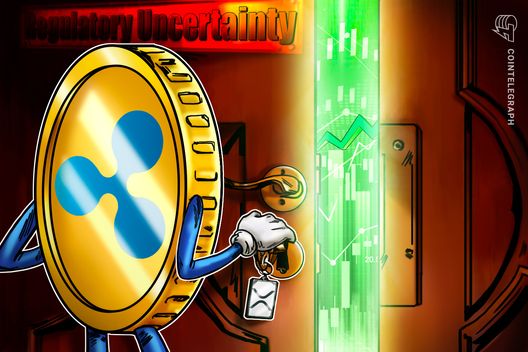

The long-running legal battle between Ripple Labs and the U.S. Securities and Exchange Commission (SEC) has been a defining chapter in XRP's history, and its resolution has significantly shaped the cryptocurrency's narrative. What began in December 2020, with the SEC accusing Ripple of selling $1.3 billion in unregistered securities, concluded in August 2025, leaving a notable impact on XRP's perception and future prospects.
The lawsuit's core argument revolved around whether XRP sales constituted investment contracts, thus making them securities under SEC regulations. The court's decision, delivered by Judge Analisa Torres in July 2023, drew a distinction between Ripple's direct sales to institutional investors and XRP sales on public exchanges. The former was deemed a securities offering, while the latter was not. This ruling became a watershed moment, providing regulatory clarity that had been missing in the crypto space. It established that a cryptocurrency token is not automatically a security; the manner in which it is sold is the determining factor.
The market responded swiftly to the initial ruling. XRP's price surged over 10% as the legal uncertainty that had loomed for years began to dissipate. The final resolution in August 2025, with Ripple agreeing to a $125 million penalty, further solidified positive market sentiment. The joint dismissal of appeals by the SEC and Ripple led to another price jump of approximately 11-12%, demonstrating renewed confidence among traders.
Beyond immediate price reactions, the lawsuit's resolution has had a profound impact on XRP's credibility and potential for institutional adoption. The legal clarity has encouraged institutional investors to explore XRP as a viable asset. Evidenced by multiple ETF applications and the approval of the ProShares Ultra XRP ETF, this marks a turning point for XRP, transitioning it into a more stable and promising asset class. South Korean exchanges, for example, accumulated $45.5 million in XRP during selloffs, signaling confidence in its market resilience.
Ripple's On-Demand Liquidity (ODL) service, which utilizes XRP for cross-border payments, has also benefitted from the clarified regulatory landscape. In Q2 2025, ODL processed $1.3 trillion in transactions, reducing remittance costs by up to 60%. Its efficiency in cross-border transactions, with settlement times of just 3–5 seconds and transaction fees under $0.01, positions XRP as a revolutionary force in the cross-border payments industry. As more financial institutions become ISO 20022 compliant, XRP stands to gain greater adoption as a bridge currency in Ripple's payment services.
However, challenges and uncertainties remain. Macroeconomic factors, such as inflation risks and potential Federal Reserve rate hikes, could introduce volatility. Technical indicators also suggest potential price corrections. Competitors, like newer blockchains and the rise of central bank digital currencies (CBDCs), may impact its long-term role.
Despite these challenges, the lawsuit's resolution has undeniably strengthened XRP's narrative. It has transitioned from a cryptocurrency shrouded in regulatory uncertainty to an asset with a clearer path forward, fostering institutional interest and increased adoption for cross-border payments. While the ambitious target of $15 per XRP may require a "perfect storm" of technological execution, widespread adoption, and favorable market conditions, the foundation for growth has been laid.